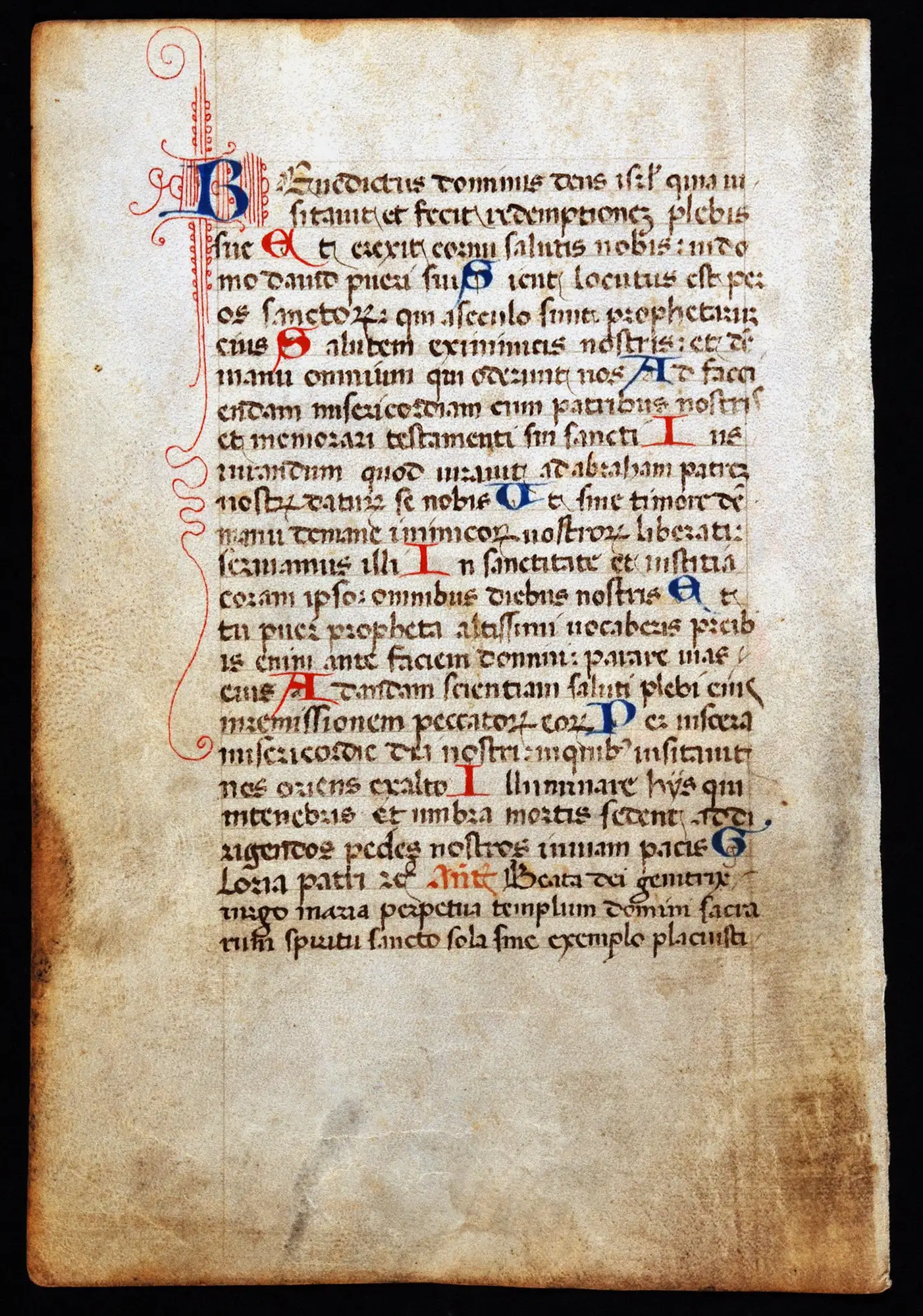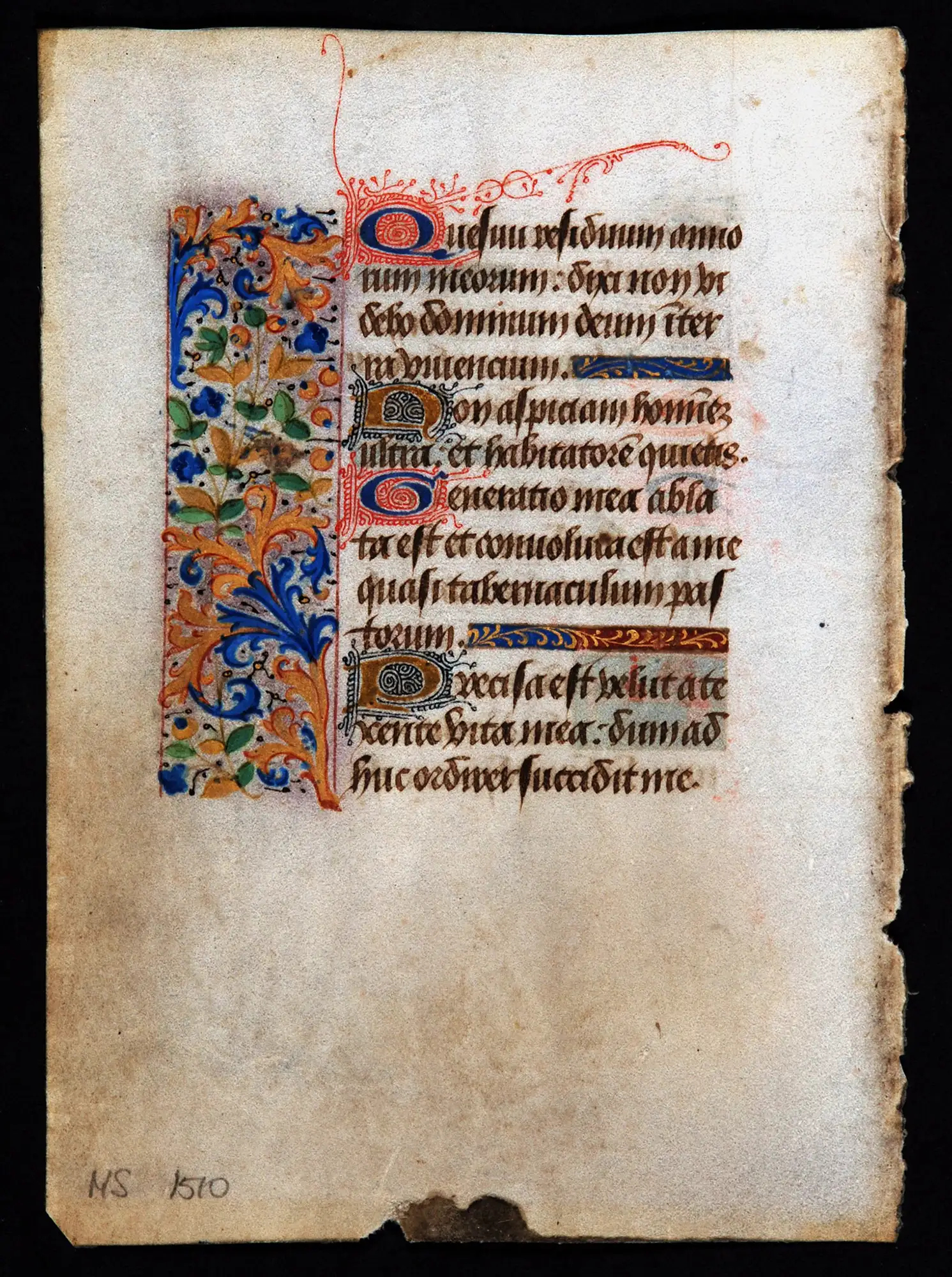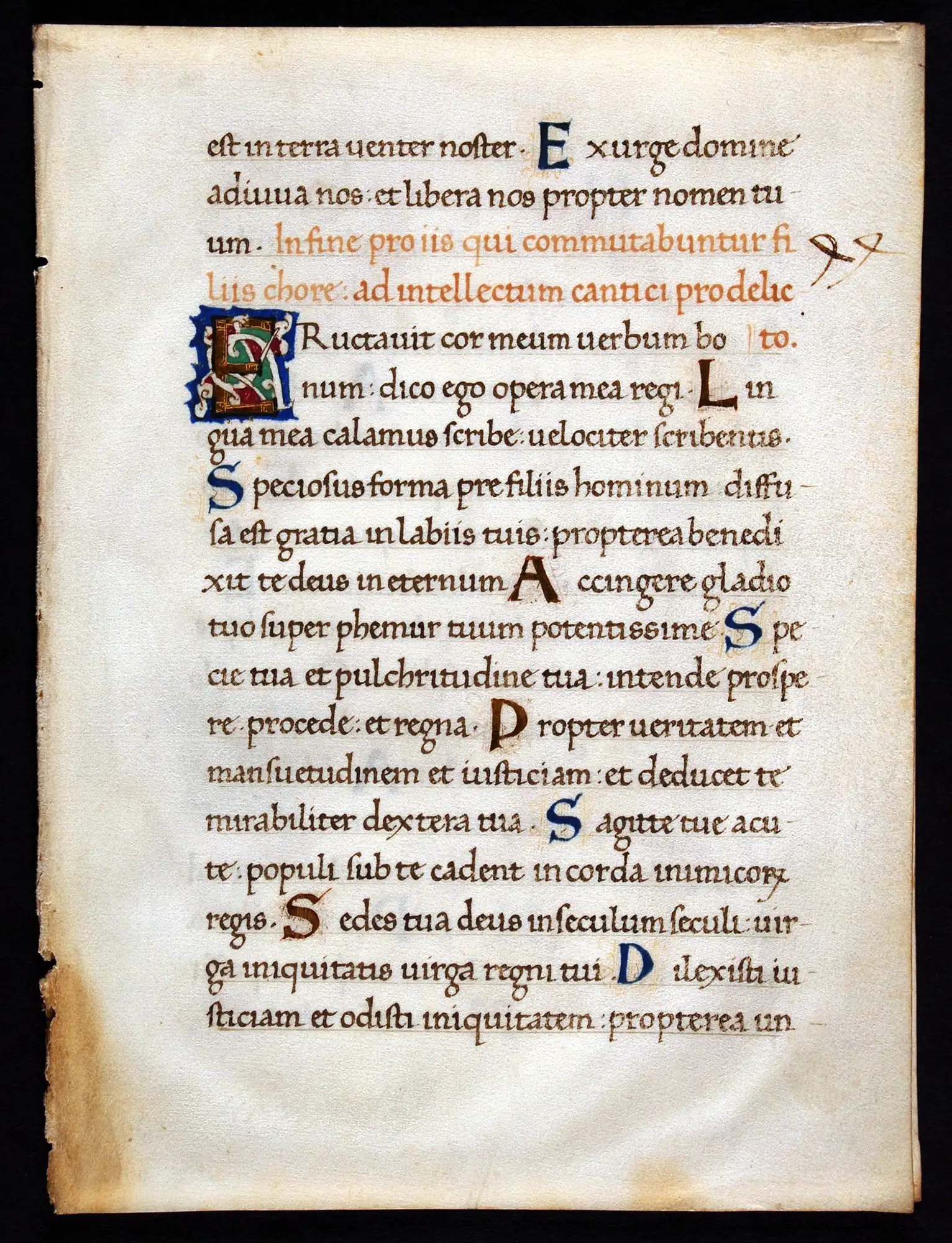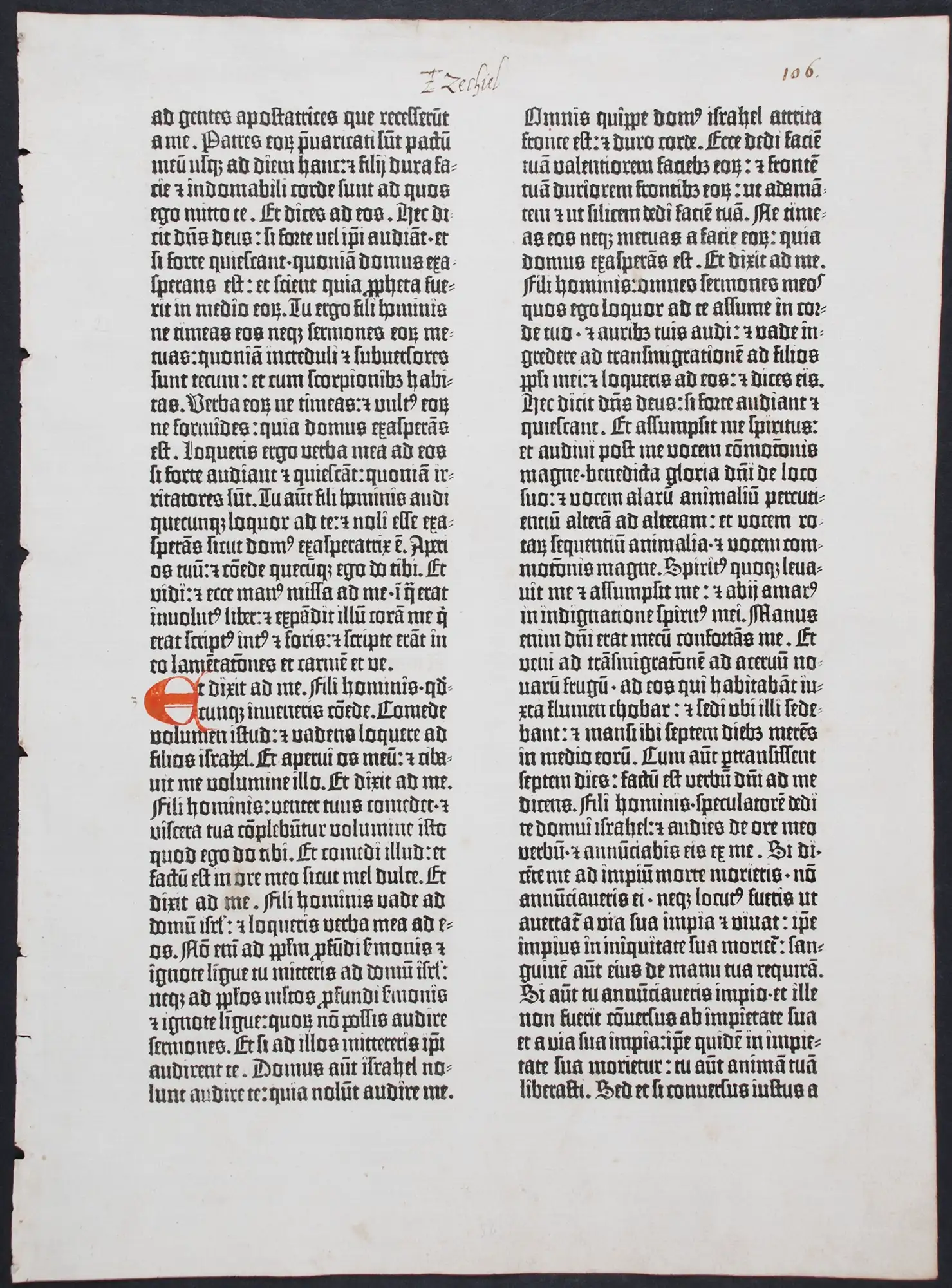
Single leaf from Ferial Psalter, in Latin and Italian. Italy, fifteenth century. Reed MSF27b.
The text of this leaf is written in a small rounded Italian gothic hand. The text is Psalm 150 and the Canticle Benedictus Dominus, with antiphons.

The text of this leaf is written in a small rounded Italian gothic hand. The text is Psalm 150 and the Canticle Benedictus Dominus, with antiphons.

As trade and commerce increased in the towns and cities during the Middle Ages, the literacy rate of the population began to increase. The informal cursive or ‘Secretary’ hand used for everyday record keeping (see MSF23b) has a rounder quality than the Gothic script and tends to run the letters together.
Scribes who were trained to write in both Gothic and Secretary hands eventually mixed the styles, and by the fifteenth century the mixed or bâtarde script was common, especially in France.
MSF34 is written in a calligraphic lettre bâtarde script. The text is part of Lauds in the Office of the Dead.

In fifteenth century Italy, scholars were greatly influenced by the beauty and clarity of the Carolingian script (See MSF1a). Reflecting the spirit of the Renaissance, a new script evolved known as ‘Humanistic’ script, or ‘Lettera Antiqua’, because it was modelled on the earlier Carolingian hand. Eventually the new script spread beyond Italy, supplanting the older Gothic script in hand-written books.
MSF26 is written in a rounded, slightly clubbed upright humanistic minuscule.

Around 1455, Gutenberg perfected the art of printing from movable type. His first typeface imitated the gothic script of the best manuscripts. Although Gothic remained in use into the seventeenth century, within 20 years of Gutenberg’s invention, printers were using typefaces modelled upon the new humanistic script. Derivatives of those typefaces remain common today, known as ‘Roman’ type.
The Library’s Gutenberg Bible leaf contains the text from Ezekiel 2:3-4:17.